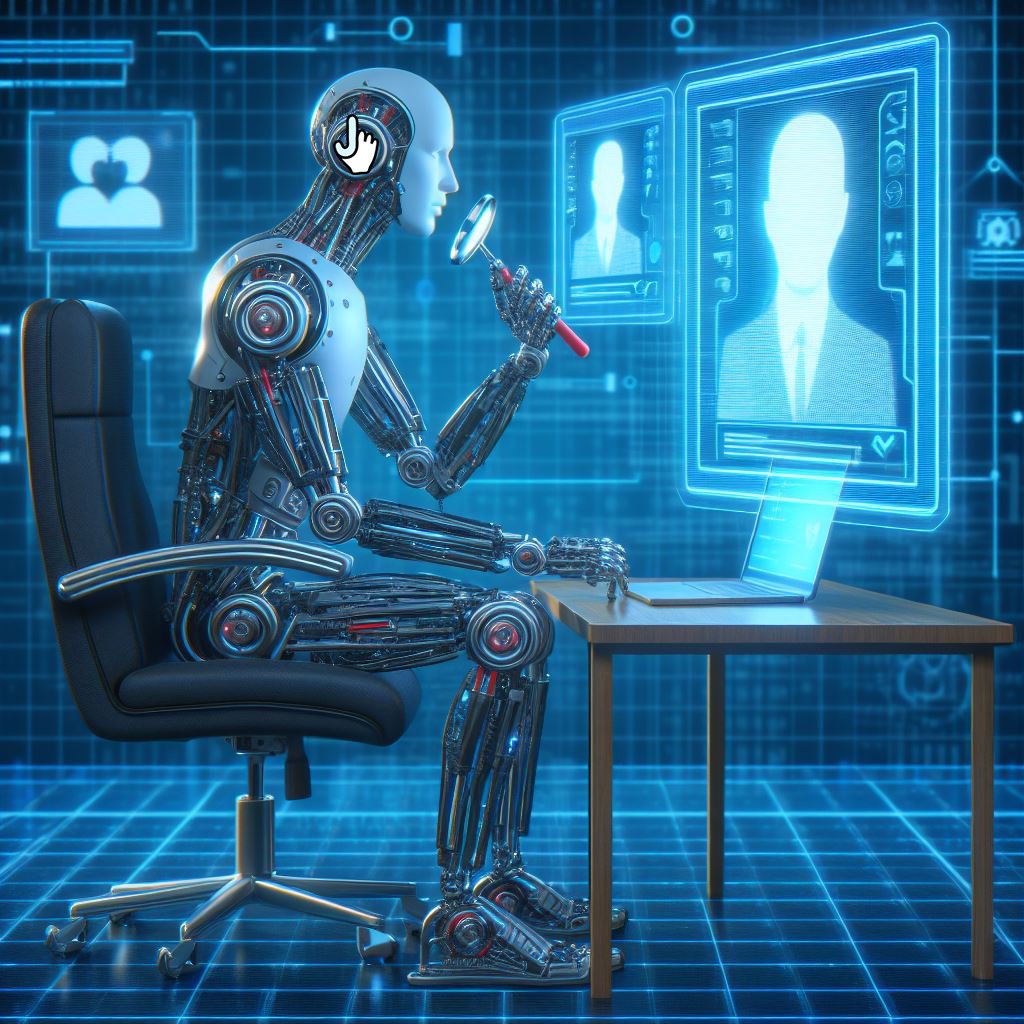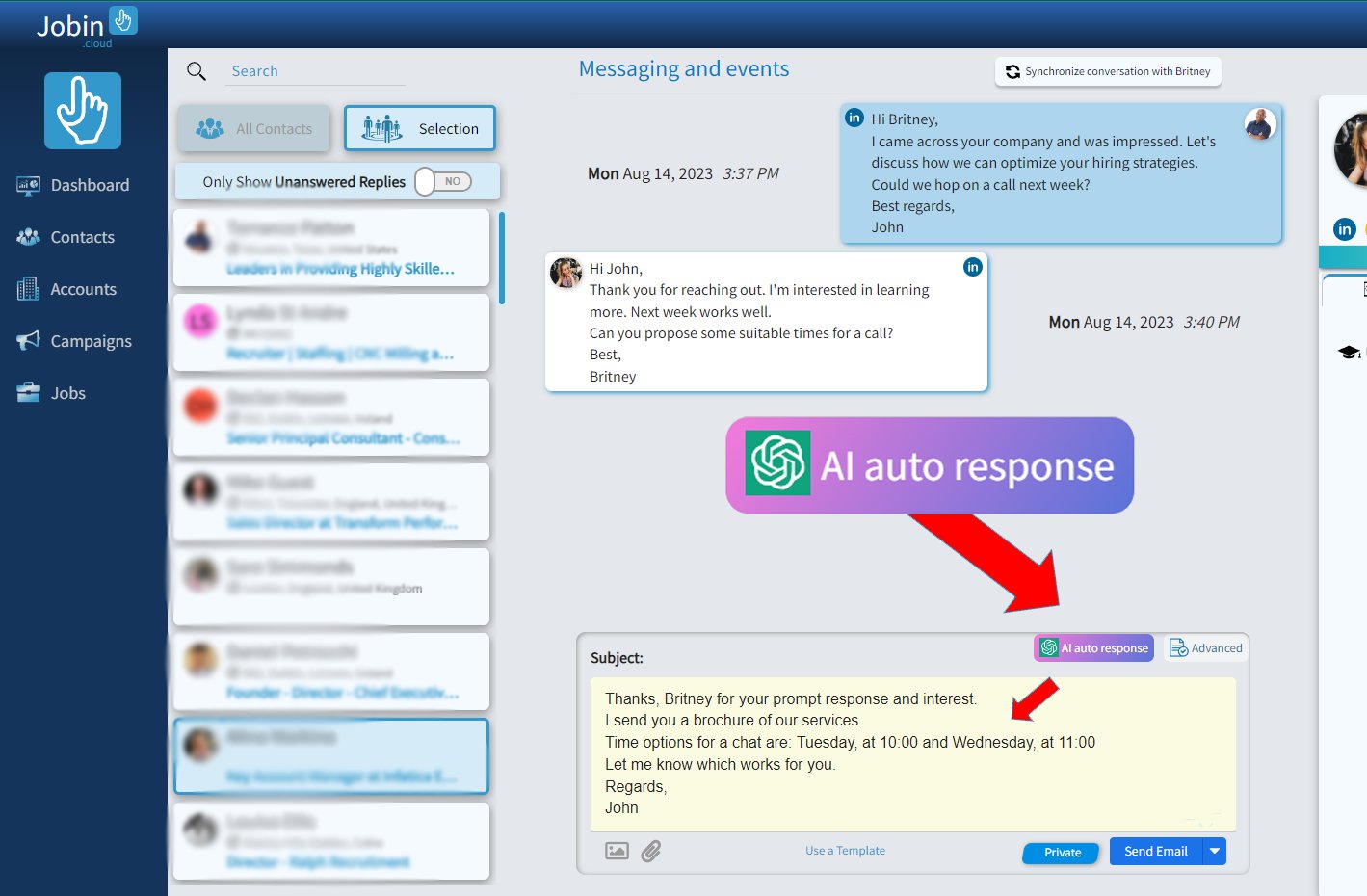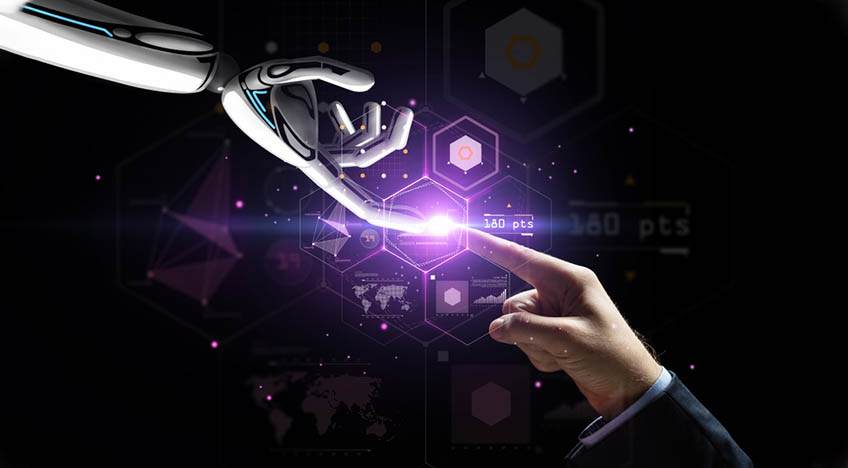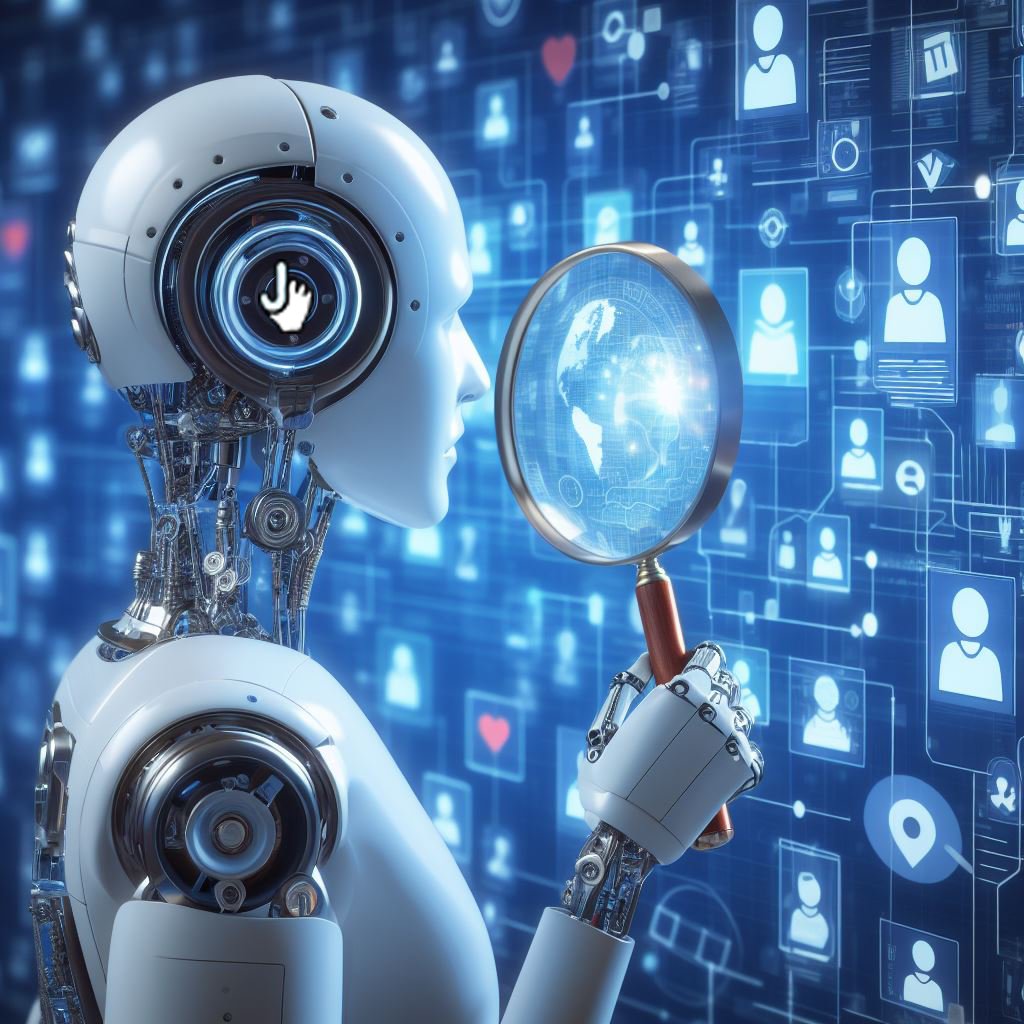Artificial Intelligence and Machine Learning in Recruitment and Selection Process
How HRM should evolve keeping a human-centric scope
Human Resource Management (HRM) faces new barriers as business fields evolve; these challenges must be overcome while assuring the organization's best possible growth and development. In this case, AI and ML technologies can come as an answer to the challenges of HRM providing new innovative solutions. AI and ML are increasingly being used in HRM to improve decision-making, automate routine tasks, and enhance the employee experience. AI and ML have been introduced so far in many sectors such as healthcare, marketing, technology, finance, and others. One of them was obviously the domain of HRM.
HRM scope and challenges
According to recent surveys, HRM's scope is not only to provide a safe and positive work environment but also to engage in strategic corporate decisions about employees, as a single recruiter often spends 15 hours per week identifying the ideal candidate for just one position (Garg et al., 2021).
In addition, 52% of HR specialists claim that the selection of candidates from a large pool of applicants is the most demanding task of hiring (Johnson, 2022). Moreover, enterprises that focus on AI recruiting services declare that they can decrease the duration for hiring from 34 days to 9 days with the assistance of their AI candidate sourcing algorithm.
The average amount of time a recruiter spends reviewing resumes typically spends around 6 to 10 seconds initially scanning a resume. There are candidates who claim that the time is limited to take such an important decision. Nevertheless, recruiters haven't got enough time to carefully assess every candidate's CV. As a result, it has been proved that 30-40% of applicants are wrong.
AI systems in HRM
Organizations have started implemented AI systems in the primary recruitment stage to assist recruiters save time and take strategic decisions in recruitment (Chen, 2022). There is a 73.53% growth in candidate attraction and onboarding expertise by deploying a non-discriminative method which withdraws the biases from recruitment and tracks down the most capable candidates (Owais, 2018).
For these specific reasons AI is transforming rapidly and is playing an increasingly important role in recruitment and selection processes.
In this situation AI practices can seem be useful in HRM by speeding up the hiring process and introducing new automation practices. AI plays a major part in the recruitment process, assisting recruiters in sorting through hundreds of CVs utilizing tools like ATS. By locating the best candidates for open positions, recruiters are able to work more quickly and effectively.
AI is increasingly being used in background checks to help employers quickly and accurately verify the information provided by job candidates, such as their education, work experience, and criminal records. The usual ways in which AI and ML systems are being used in background and reference checks are the automation of data collection and analysis, identity verification, and predictive analytics. Additional ways in which AI and ML technologies are integrated into a background check are in the creation of AI algorithms that analyze data on past criminal behavior, job performance, make predictions about whether a candidate is likely to engage in risky or unethical behavior in the future and to detect the unconscious bias (Sanyaolu and Atsaboghena, 2022).
A real example of an AI background/reference check is the Checkr (Checkr, 2023). AI technologies can help employers conduct more thorough and efficient background checks, which can improve the quality of hires and reduce the risk of costly hiring mistakes.

Ethical use of AI in HRM
However, it's important to use these technologies in an ethical and transparent manner and to ensure that candidates are treated fairly and with respect throughout the background check process (Mundarinti, 2020).
Moreover, chatbots are a very successful and popular AI tool that is adopted widely by organizations allowing organizations to automate insignificant administrative tasks, provide employees with instant support and assistance, and gather valuable employee feedback. However, it is important to ensure that chatbots are programmed ethically and transparently and that employees have the option to speak to a human representative if needed (Koivunen et al., 2022).
According to the latest survey, software that integrates AI like chatbots, into ATS and CRM can reduce the cost per candidate by up to 71% which increases the efficiency in recruitment by three times (Tewari and Pant, 2020).
Significant efficiency gains can be achieved by scanning large databases of aggregated data of candidate profiles to find the best fit. AI provides advantages in performing this task, surpassing simple keyword searches and exploiting the possibilities offered by use of AI generated Boolean search strings. More details about this are in this article
A list of AI tools for sourcing can be found here.
AI technologies are transforming the recruitment and selection process, making it faster, more efficient, and more accurate. However, it is important to use AI in a responsible and ethical manner, ensuring that candidates are treated fairly and with respect, and that any bias in the process is identified and removed (Hemalatha et al., 2021).
Neuroscience-based softwares
However, the Chatbots are not the only AI tool that can be used in HRM for the recruitment and selection. Very innovative and efficient tools as well are the neuroscience-based softwares, which cooperate with AI and ML technologies, providing business solutions to HR departments for talent acquisition, learning and development, employment engagement and retention, workforce transformation and performance management. These technologies provide insights into cognitive processes, emotional responses, and neurophysiological markers, usually through simple cognitive neuroscience-based games or by image and video recognition practices to form a psychological profile of a candidate (Bhave, Teo and Dalal, 2019).
AI technologies can process and interpret this data and predict future behavior and performance in order to hire the most suitable person, in the most suitable position, reducing as little as possible the turnover rates (Paulus et al., 2009).
Some of the traits that were examined by neuroscience-based games are memory, attention, risk analysis, multi-tasking, problem-solving, learning potential, decision-making and perceptual speed (Owais, 2018).
By integrating neuroscience-based assessments with AI technologies, organizations can improve the accuracy and efficiency of candidate evaluation, enabling more effective talent acquisition and selection processes (Comaford, 2020). According to Pymetrics, which is one of the most popular neuroscience-based and AI platforms, has decreased 59% of the time to hire and more than 90% of employees and candidates were satisfied with the experience (Pymetrics, 2023).
In addition, AI and ML technologies can be used to mitigate the risks associated with the hiring process. These technologies can analyze large amounts of data, identify patterns, and make predictions, providing insights that can help recruiters make more informed decisions, such as reducing the turnover rates (Ore and Sposato, 2021).
Nonetheless, these technologies can discriminate against certain groups and perpetuate bias and inequality because algorithms either are not trained well or are inaccurately biased. As a result, the time of hiring may increase, useful candidates can be excluded, and job postings can be discriminative against certain groups of minorities (Villeda and McCamey, 2019).

Generative Artificial Intelligence in HR
Generative AI is a type of AI that can create new content and ideas, including conversations, stories, images, videos, and music.
Generative artificial intelligence (AI) in Human Resource Management (HRM) encompasses the use of algorithms and models to generate human-like outputs, such as text, images, or even simulated interactions.
In HRM, this technology can revolutionize various processes, from recruitment and onboarding to employee engagement and training.
One primary application of generative AI in HRM is in talent acquisition. AI-powered systems can analyze vast amounts of data to identify potential candidates based on specific criteria outlined by HR professionals.
These systems can also generate personalized job postings, tailor-made for attracting diverse talent pools. Moreover, AI chatbots can engage with candidates, answering queries and providing information about job roles, company culture, and application procedures.
Once candidates are hired, generative AI continues to play a crucial role in the onboarding process. Virtual mentors powered by AI can provide new employees with personalized training modules, guiding them through company policies, procedures, and expectations.
These virtual mentors can simulate real-life scenarios, allowing employees to practice problem-solving and decision-making in a risk-free environment.
Generative AI also facilitates employee engagement and development initiatives. AI-driven platforms can analyze employee feedback, performance data, and preferences to generate personalized learning pathways.
These pathways may include recommended courses, workshops, or mentorship opportunities tailored to each employee's career aspirations and skill gaps.
Moreover, generative AI can assist HR professionals in creating diverse and inclusive workplaces. By analyzing language patterns and sentiments within company communications, AI algorithms can identify potential biases and suggest adjustments to promote inclusivity.
Conclusion
In conclusion, the integration of Artificial Intelligence (AI) and Machine Learning (ML) technologies into the recruitment and selection processes has brought about significant improvements in Human Resource Management (HRM).
These technologies address the multifaceted challenges faced by HR professionals, ranging from time-consuming candidate screening to mitigating biases in decision-making.
By automating routine tasks, enhancing decision-making capabilities, and fostering a more inclusive workplace environment, AI and ML are reshaping HRM practices. From speeding up the hiring process and optimizing candidate sourcing to revolutionizing employee onboarding and development, the impact of AI and ML in HRM is profound.
Since the release of OpenAI's GPT-3 model in June 2020 and subsequent public access to its API, hundreds of applications have been developed. In some cases these have been integrated into systems that combine artificial intelligence with other automation. An example of this all-in-one integration is Jobin.cloud multi-tool for recruitment, sourcing and outreach.
However, it's imperative to ensure the ethical and responsible use of these technologies, safeguarding fairness and respect for candidates throughout the process. As AI and ML continue to evolve, HRM stands to benefit from further advancements that prioritize efficiency, accuracy, and ethical considerations, ultimately driving organizational growth and success.
References:
- Garg, S., Sinha, S., Kar, A.K. and Mani, M. (2021). A review of machine learning applications in human resource management. International Journal of Productivity and Performance Management, ahead-of-print(ahead-of-print). doi:https://doi.org/10.1108/ijppm-08-2020-0427.
- Johnson, M. (2022). 7 effective uses of AI in recruitment. [online] UNLEASH. Available at: https://www.unleash.ai/artificial-intelligence/7-effective-uses-of-ai-in-recruitment/ [Accessed 17 Feb. 2023].
- Chen, D. (2022). ARTIFICIAL INTELLIGENCE (AI) IN EMPLOYEE SELECTION: HOW ALGORITHM-BASED DECISION AIDS INFLUENCE RECRUITERS’ DECISION-MAKING IN RESUME SCREENING.
- Checkr (2023). Checkr – Employee Background Screening for Companies. [online] Checkr. Available at: https://checkr.com/ [Accessed 17 Feb. 2023].
- Sanyaolu, E. and Atsaboghena , R. (2022). Role of Artificial Intelligence in Human Re-source Management: Overview of its benefits and challenges. [online] doi:https://doi.org/10.13140/RG.2.2.22297.29283.
- Mundarinti, P. (2020). The Potential of AI in Background Verification. [online] www.linkedin.com. Available at: https://www.linkedin.com/pulse/potential-ai-background-verification-palguni-mundarinti-2c/ [Accessed 17 Feb. 2023].
- Strazzulla, P. (2023). The Top 11 Best AI Recruiting Tools - May 2020 | SelectSoftware Reviews. [online] www.selectsoftwarereviews.com. Available at: https://www.selectsoftwarereviews.com/buyer-guide/ai-recruiting [Accessed 7 May 2023].
- Tewari, I. and Pant, M. (2020). Artificial Intelligence Reshaping Human Resource Management : A Review. 2020 IEEE International Conference on Advent Trends in Multidis-ciplinary Research and Innovation (ICATMRI), 1(3). doi:https://doi.org/10.1109/icatmri51801.2020.9398420.
- Hemalatha, A., Kumari, P.Barani., Nawaz, N. and Gajenderan, V. (2021). Impact of Artificial Intelligence on Recruitment and Selection of Information Technology Companies. 2021 International Conference on Artificial Intelligence and Smart Systems (ICAIS), Artificial Intelligence and Smart Systems (ICAIS), 2021 International Conference on, [online] 9(3), pp.60–66. doi:https://doi.org/10.1109/ICAIS50930.2021.9396036.
- Bhave, D.P., Teo, L.H. and Dalal, R.S. (2019). Privacy at Work: A Review and a Research Agenda for a Contested Terrain. Journal of Management, 46(1), pp.127–164. doi:https://doi.org/10.1177/0149206319878254.
- Paulus, M.P., Potterat, E.G., Taylor, M.K., Van Orden, K.F., Bauman, J., Momen, N., Padilla, G.A. and Swain, J.L. (2009). A neuroscience approach to optimizing brain resources for human performance in extreme environments. Neuroscience & Biobehavioral Reviews, [online] 33(7), pp.1080–1088. doi:https://doi.org/10.1016/j.neubiorev.2009.05.003.
- Owais, A. (2018). ARTIFICIAL INTELLIGENCE IN HR. Dept. of Management Studies, North Campus, University of Kashmir, 5(4).
- Pymetrics (2023). Case Studies. [online] www.pymetrics.ai. Available at: https://www.pymetrics.ai/case-studies [Accessed 8 May 2023].
- Comaford, C. (2020). The Neuroscience Of Recruiting: Put The Right Person In The Right Role, Every Time [Infographics]. [online] Forbes. Available at: https://www.forbes.com/sites/christinecomaford/2020/06/27/the-neuroscience-of-recruiting-put-the-right-person-in-the-right-role-every-time-infographics/ [Accessed 8 May 2023].
- Villeda, M. and McCamey, R. (2019). Use of Social Networking Sites for Recruiting and Selecting in the Hiring Process. International Business Research, [online] 12(3), p.66. doi:https://doi.org/10.5539/ibr.v12n3p66.
- Ore, O. and Sposato, M. (2021). Opportunities and risks of artificial intelligence in re-cruitment and selection. International Journal of Organizational Analysis, 30(6). doi:https://doi.org/10.1108/ijoa-07-2020-2291.







